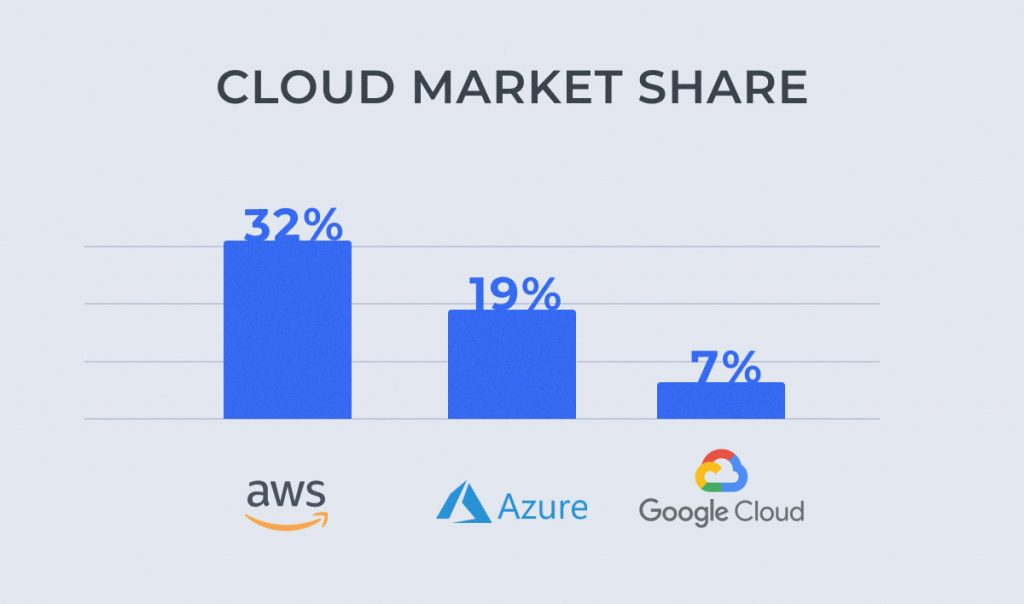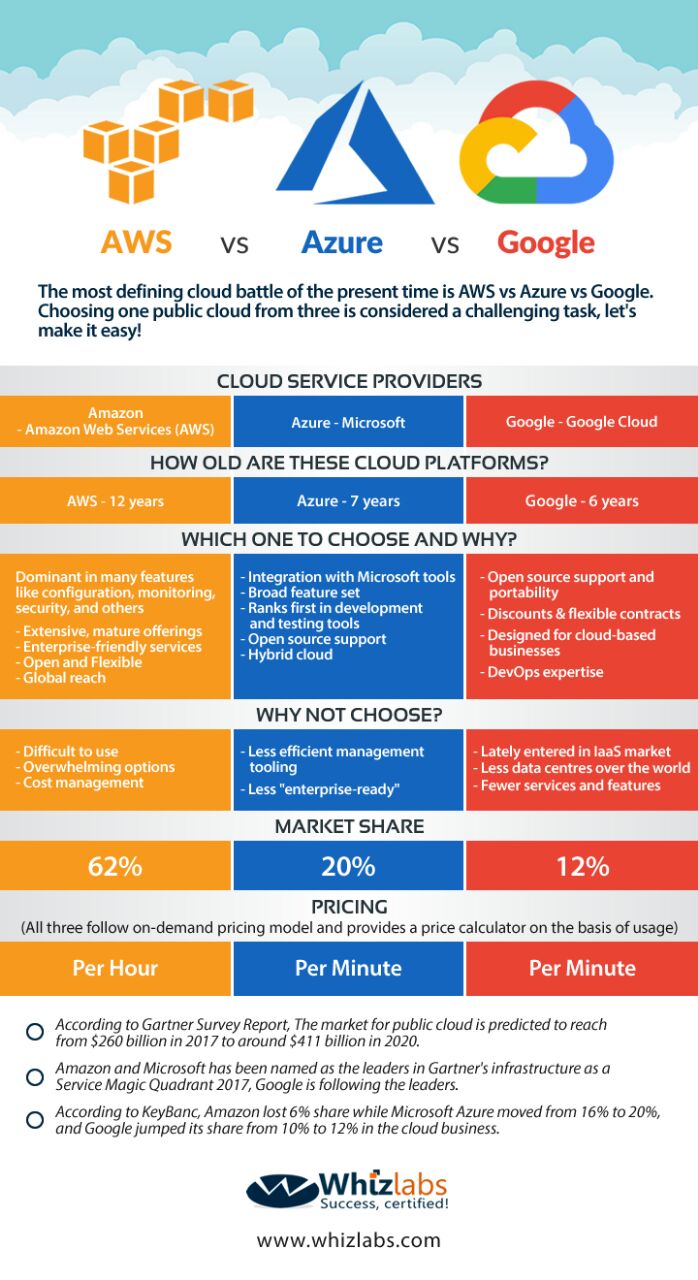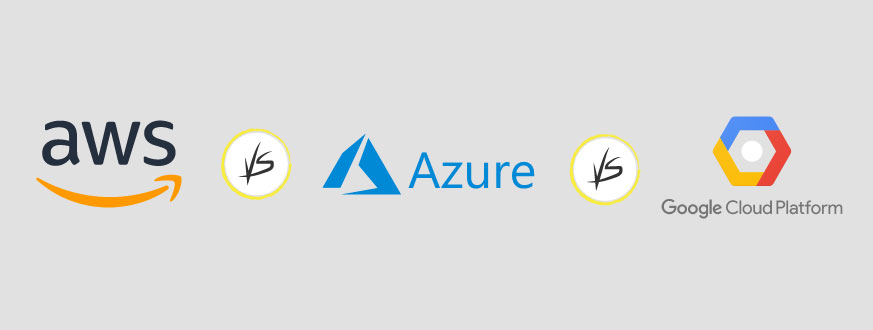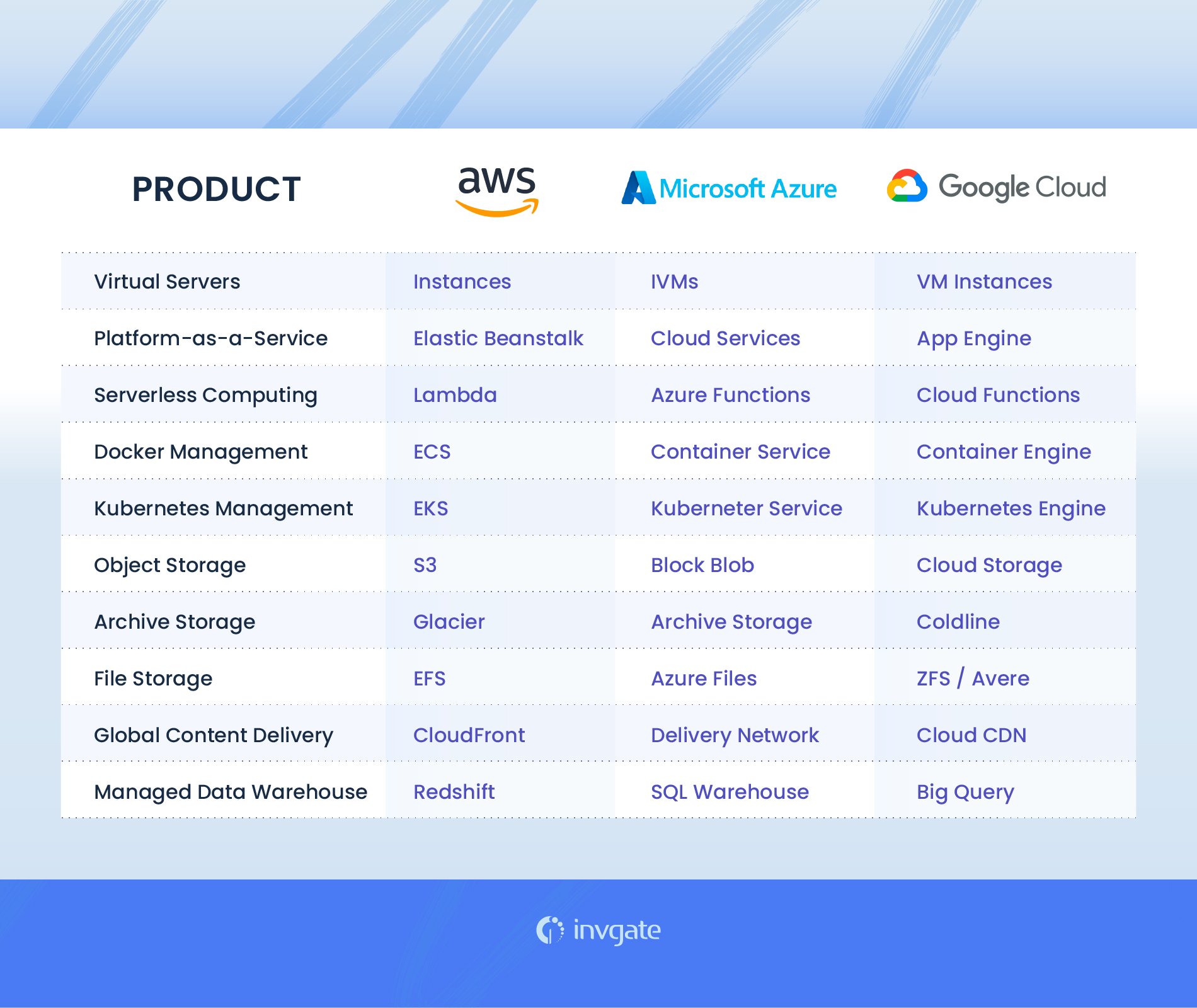Understanding the Importance of Price Comparison in Cloud Services
Price comparison is a crucial aspect of choosing a cloud service provider, such as AWS, Azure, or Google Cloud. By comparing prices, organizations can make informed decisions that lead to cost savings, budget planning, and resource optimization. This is especially important in the rapidly evolving world of cloud computing, where prices and offerings are constantly changing.
When comparing prices, it’s essential to consider the specific needs of your organization. For example, if your workload is highly variable, a pay-as-you-go pricing model may be the most cost-effective option. On the other hand, if you have predictable usage, reserved instances or long-term contracts may provide significant discounts. Additionally, some providers offer spot instances, which allow organizations to bid on unused computing resources at a significant discount.
Price comparison also helps organizations to identify cost-saving opportunities. For example, by comparing prices across different regions or availability zones, organizations can identify the most cost-effective locations for their workloads. Additionally, by analyzing usage patterns, organizations can identify opportunities to optimize resource utilization and reduce waste.
In summary, price comparison is a critical aspect of choosing a cloud service provider. By comparing prices, organizations can make informed decisions that lead to cost savings, budget planning, and resource optimization. With the right approach, price comparison can help organizations to maximize the value they receive from their cloud investments.
Breaking Down the Pricing Models of Major Cloud Providers
When it comes to cloud services, AWS, Azure, and Google Cloud all offer a variety of pricing models to meet the needs of different organizations. The most common pricing models are pay-as-you-go, reserved instances, and spot instances.
Pay-as-you-go pricing is a flexible option that allows organizations to pay for the resources they use on an hourly or monthly basis. This pricing model is ideal for organizations with variable workloads, as it provides the flexibility to scale up or down as needed. However, it can also be more expensive than other pricing models for predictable workloads.
Reserved instances are a cost-effective option for organizations with predictable workloads. By committing to a certain amount of usage over a specified period, organizations can receive significant discounts compared to pay-as-you-go pricing. Reserved instances are available in one-year and three-year terms, with the option to purchase either standard or convertible instances.
Spot instances are a low-cost option for organizations that can tolerate interruptions in service. Spot instances allow organizations to bid on unused computing resources, with the price fluctuating based on supply and demand. This pricing model is ideal for workloads that are not time-sensitive, such as data processing or scientific computing.
When comparing the pricing models of AWS, Azure, and Google Cloud, it’s essential to consider the specific needs of your organization. For example, if your workload is highly variable, a pay-as-you-go pricing model may be the most cost-effective option. On the other hand, if you have predictable usage, reserved instances or long-term contracts may provide significant discounts. Additionally, some providers offer spot instances, which allow organizations to bid on unused computing resources at a significant discount.
It’s also important to note that each provider has its own unique pricing model features. For example, AWS offers a savings plan that provides discounts on usage in exchange for a commitment to a consistent amount of usage over a specified period. Azure offers a hybrid benefit that allows organizations to use their on-premises Windows Server and SQL Server licenses in the cloud, reducing the cost of running those workloads in Azure. Google Cloud offers per-second billing, which allows organizations to pay for only the time they use.
In summary, the pricing models of AWS, Azure, and Google Cloud all offer unique benefits and trade-offs. By understanding the key differences and similarities between these pricing models, organizations can make informed decisions that lead to cost savings, budget planning, and resource optimization.
How to Effectively Compare Prices of AWS, Azure, and Google Cloud
Comparing prices of cloud services such as AWS, Azure, and Google Cloud can be a complex process, but it’s essential for organizations looking to optimize costs and make informed decisions. Here’s a step-by-step guide on how to effectively compare prices:
Step 1: Estimate Usage
The first step in comparing prices is to estimate usage. This involves determining the amount of computing resources, storage, and other services your organization will need. You can use the pricing calculators provided by each cloud provider to estimate costs based on your usage.
Step 2: Identify Cost-Saving Opportunities
Once you’ve estimated usage, the next step is to identify cost-saving opportunities. This involves analyzing the pricing models of each cloud provider and identifying areas where you can save money. For example, if you have predictable usage, reserved instances or long-term contracts may provide significant discounts compared to pay-as-you-go pricing.
Step 3: Choose the Right Pricing Model
After identifying cost-saving opportunities, the next step is to choose the right pricing model. This involves selecting a pricing model that aligns with your organization’s needs and usage patterns. For example, if your workload is highly variable, a pay-as-you-go pricing model may be the most cost-effective option. On the other hand, if you have predictable usage, reserved instances or long-term contracts may provide significant discounts.
Step 4: Compare Prices
The final step in comparing prices is to compare the costs and features of each cloud service. This involves creating a side-by-side comparison of the prices and features of each virtual machine, storage, and database service offered by AWS, Azure, and Google Cloud. By comparing prices and features, you can make an informed decision about which cloud service provides the best value for your organization.
When comparing prices, it’s essential to consider the total cost of ownership, including data transfer fees, support charges, and compliance costs. Additionally, it’s important to consider the long-term costs and benefits of each cloud service, as well as the potential impact on your organization’s budget and resource optimization.
In summary, comparing prices of cloud services such as AWS, Azure, and Google Cloud is a complex process, but it’s essential for organizations looking to optimize costs and make informed decisions. By following these four steps, organizations can effectively compare prices and make informed decisions that lead to cost savings, budget planning, and resource optimization.
Real-World Examples: Comparing Prices of Specific Cloud Services
When comparing prices of cloud services such as AWS, Azure, and Google Cloud, it’s essential to analyze the prices of specific cloud services, such as virtual machines, storage, and databases. Here’s a side-by-side comparison of the costs and features of each service:
Virtual Machines
Virtual machines are a critical component of cloud services, providing computing resources for running applications and workloads. Here’s a comparison of the prices and features of virtual machines offered by AWS, Azure, and Google Cloud:
- AWS: AWS offers a wide range of virtual machine options, including general-purpose, compute-optimized, memory-optimized, and accelerated computing instances. Prices vary based on the instance type, region, and usage. For example, an m5.large general-purpose instance in the US East (N. Virginia) region costs $0.096 per hour on-demand.
- Azure: Azure offers a variety of virtual machine options, including general-purpose, memory-optimized, and compute-optimized instances. Prices vary based on the instance type, region, and usage. For example, a D2s v3 general-purpose instance in the East US region costs $0.10 per hour on-demand.
- Google Cloud: Google Cloud offers a range of virtual machine options, including general-purpose, memory-optimized, and compute-optimized instances. Prices vary based on the instance type, region, and usage. For example, an n1-standard-2 general-purpose instance in the US Central1 region costs $0.096 per hour on-demand.
Storage
Storage is another critical component of cloud services, providing a place to store data and applications. Here’s a comparison of the prices and features of storage options offered by AWS, Azure, and Google Cloud:
- AWS: AWS offers a variety of storage options, including Amazon Elastic Block Store (EBS), Amazon Simple Storage Service (S3), and Amazon Elastic File System (EFS). Prices vary based on the storage type, region, and usage. For example, an EBS general-purpose SSD (gp2) volume in the US East (N. Virginia) region costs $0.10 per GB-month.
- Azure: Azure offers a range of storage options, including managed disks, blob storage, and file storage. Prices vary based on the storage type, region, and usage. For example, a 128 GB managed disk in the East US region costs $0.10 per GB-month.
- Google Cloud: Google Cloud offers a variety of storage options, including persistent disks, cloud storage, and cloud filing system. Prices vary based on the storage type, region, and usage. For example, a 100 GB standard persistent disk in the US Central1 region costs $0.10 per GB-month.
Databases
Databases are a critical component of cloud services, providing a place to store and manage data. Here’s a comparison of the prices and features of database options offered by AWS, Azure, and Google Cloud:
- AWS: AWS offers a variety of database options, including Amazon Relational Database Service (RDS), Amazon DynamoDB, and Amazon Redshift. Prices vary based on the database type, region, and usage. For example, an RDS db.t2.micro instance in the US East (N. Virginia) region costs $0.023 per hour on-demand.
- Azure: Azure offers a range of database options, including Azure SQL Database, Azure Cosmos DB, and Azure Database for MySQL. Prices vary based on the database type, region, and usage. For example, an Azure SQL Database S0 instance in the East US region costs $4.99 per month.
- Google Cloud: Google Cloud offers a variety of database options, including Cloud SQL, Cloud Spanner, and Cloud Bigtable. Prices vary based on the database type, region, and usage. For example, a Cloud SQL db-n1-standard-1 instance in the US Central1 region costs $0.04 per hour.
In summary, when comparing prices of cloud services such as AWS, Azure, and Google Cloud, it’s essential to analyze the prices of specific cloud services, such as virtual machines, storage, and databases. By comparing the costs and features of each service, organizations can make informed decisions that lead to cost savings, budget planning, and resource optimization.
Maximizing Cost Savings with Multi-Cloud Strategies
Organizations can leverage multi-cloud strategies to maximize cost savings and optimize resource utilization. Here are some ways to do so:
Hybrid Cloud
Hybrid cloud refers to the use of both public and private clouds to meet an organization’s IT needs. By using a hybrid cloud strategy, organizations can take advantage of the cost savings of public cloud services while maintaining the security and control of private cloud services. For example, an organization can use a public cloud service for non-sensitive workloads and a private cloud service for sensitive workloads.
Cloud Bursting
Cloud bursting refers to the use of public cloud services to supplement private cloud services during periods of high demand. By using a cloud bursting strategy, organizations can avoid the cost of maintaining a large private cloud infrastructure while ensuring that they have the resources they need during peak times. For example, an e-commerce company can use a public cloud service to handle the increased traffic during the holiday season.
Cloud Migration
Cloud migration refers to the process of moving workloads from on-premises infrastructure to cloud infrastructure. By using a cloud migration strategy, organizations can take advantage of the cost savings and flexibility of cloud services. For example, an organization can migrate its legacy applications to a cloud service to reduce maintenance costs and improve scalability.
When implementing a multi-cloud strategy, it’s essential to consider the costs and benefits of each cloud service. By comparing the prices and features of each service, organizations can make informed decisions that lead to cost savings, budget planning, and resource optimization.
Additionally, it’s important to monitor usage and costs regularly to ensure that the multi-cloud strategy is delivering the expected cost savings. By using cloud management tools and monitoring services, organizations can track usage, identify cost-saving opportunities, and optimize resource utilization.
In summary, organizations can leverage multi-cloud strategies to maximize cost savings and optimize resource utilization. By using hybrid cloud, cloud bursting, and cloud migration strategies, organizations can take advantage of the cost savings and flexibility of cloud services while maintaining the security and control of on-premises infrastructure.
Navigating Hidden Costs and Complexities in Cloud Pricing
When comparing prices of cloud services such as AWS, Azure, and Google Cloud, it’s essential to consider the hidden costs and complexities that can impact your organization’s budget. Here are some common hidden costs and complexities to look out for:
Data Transfer Fees
Data transfer fees can add up quickly, especially for organizations that move large amounts of data in and out of the cloud. It’s essential to understand the data transfer fees associated with each cloud service and factor them into your cost comparisons. For example, AWS charges for data transfer out of its network, while Azure charges for data transfer in and out of its network.
Support Charges
Support charges can also add up quickly, especially for organizations that require a high level of support. It’s essential to understand the support charges associated with each cloud service and factor them into your cost comparisons. For example, AWS charges for premium support, while Azure offers a free support plan for basic troubleshooting.
Compliance Costs
Compliance costs can be significant, especially for organizations that operate in regulated industries. It’s essential to understand the compliance costs associated with each cloud service and factor them into your cost comparisons. For example, AWS offers a variety of compliance programs, while Azure offers a compliance manager tool to help organizations manage compliance requirements.
To avoid these pitfalls and make informed decisions, it’s essential to read the fine print and understand the pricing models of each cloud service. By doing so, organizations can identify and mitigate hidden costs and complexities, ensuring that they are making informed decisions that lead to cost savings, budget planning, and resource optimization.
Additionally, it’s important to regularly review and optimize cloud usage to ensure that your organization is not overspending. By using cloud management tools and monitoring services, organizations can track usage, identify cost-saving opportunities, and optimize resource utilization.
In summary, navigating hidden costs and complexities in cloud pricing is essential for organizations looking to maximize cost savings and optimize resource utilization. By understanding the data transfer fees, support charges, and compliance costs associated with each cloud service, organizations can make informed decisions that lead to cost savings, budget planning, and resource optimization.
Staying Up-to-Date with Price Changes and Market Trends
Staying informed about price changes and market trends in cloud services is essential for organizations looking to maximize cost savings and optimize resource utilization. Here are some ways to stay up-to-date:
Price Reduction Announcements
Cloud providers regularly announce price reductions for their services. It’s essential to stay informed about these announcements to take advantage of cost savings. For example, AWS announced a 10% price reduction for its EC2 instances in 2021, while Azure announced a 5% price reduction for its virtual machines in the same year.
New Product Launches
Cloud providers regularly launch new products and services. It’s essential to stay informed about these launches to take advantage of new features and capabilities. For example, Google Cloud launched its Anthos platform in 2019, allowing organizations to manage workloads across multiple clouds and on-premises infrastructure.
Competitor Analysis
Staying informed about the pricing and offerings of competitors is essential for organizations looking to maximize cost savings and optimize resource utilization. By comparing the prices and features of each cloud service, organizations can make informed decisions that lead to cost savings, budget planning, and resource optimization.
To stay up-to-date with price changes and market trends, it’s essential to regularly monitor the websites and social media channels of cloud providers. Additionally, it’s important to subscribe to industry newsletters and publications, attend industry events and conferences, and participate in online communities and forums.
By staying informed about price changes and market trends, organizations can make informed decisions that lead to cost savings, budget planning, and resource optimization. Additionally, by taking advantage of new products and services, organizations can improve their agility, scalability, and competitiveness in the market.
In summary, staying up-to-date with price changes and market trends in cloud services is essential for organizations looking to maximize cost savings and optimize resource utilization. By staying informed about price reductions, new product launches, and competitor analysis, organizations can make informed decisions that lead to cost savings, budget planning, and resource optimization.







